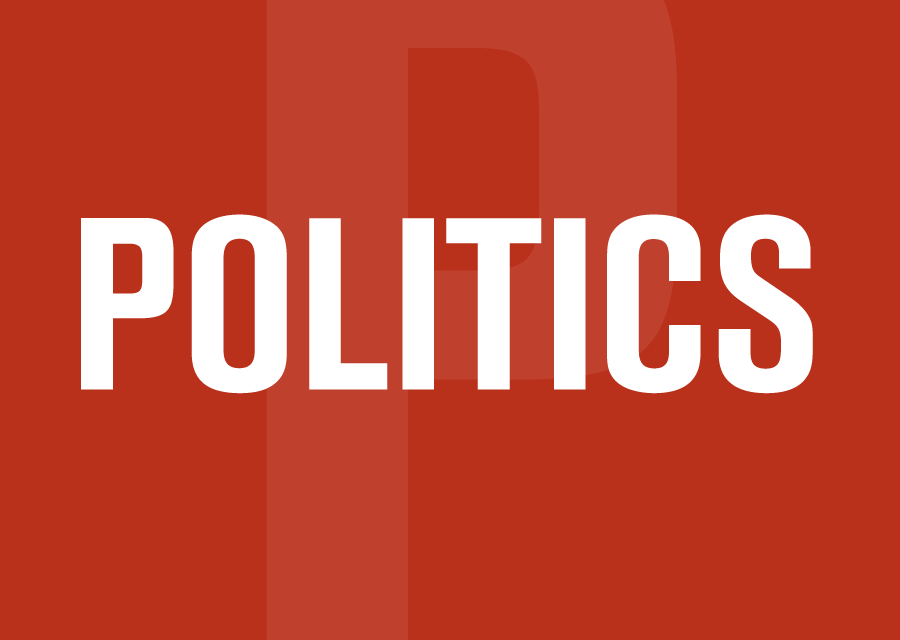The winter budget session of the Nova Scotia legislature ended Wednesday with more tweaking of legislation by the Houston government but no backing down on their most contentious initiatives.
The Houston government amended a bill giving it the power to order municipalities “to build, change, or dismantle transportation infrastructure” to comply with provincial priorities. Local governments will now have a say in how much they have to pay for construction ordered by the province. That small concession, following an outcry from municipalities, joins earlier adjustments in response to negative feedback to freedom of information and interprovincial trade bills, as well as withdrawal of a widely-condemned attempt to curtail the activities of the auditor general.
This willingness to adjust may be, as Premier Houston would have it, evidence of a government that listens to people. Or, as the NDP’s Suzy Hansen put it, sign of a government that “has patted itself on the back for walking back some of the worst ideas ever, after public outrage.”
On those measures withdrawn or amended, the truth likely resides somewhere between. But while showing some flexibility on those ideas the PC government held firm on several other bills that show its unwillingness to give up on the Trumpian tendencies discussed here. They remain ready to interfere with universities, fire civil servants without cause and open the doors to mining for uranium and drilling for fossil fuels – moves also found on the pages of the MAGA playbook.
On universities the government at least responded to criticism with an argument that increased powers are needed just in case there’s a financial crisis at any of the province’s ten universities. It remains to be seen whether that’s all they have in mind. But on the public service, uranium mining and fracking for natural gas, the government dug in its heels and answered a wall of reasoned criticism from the public and opposition MLAs with silence or shopworn rhetoric.
On the public service, the government gave itself the power to fire non-union workers without cause while bypassing basic job protections in the labour standards code. According to one retired civil servant, key officials like chief medical officer of health Robert Strang would be left with less job security than “somebody who’s been slinging coffee and doughnuts for 12 years.”
That conjures up Elon Musk and his DOGE, and the explanation from Twila Grosse, minister responsible for the public service did nothing to dispel that.”We need the right skill set at this time to ensure that we’re able to continue to grow the province and do the things that we’re doing.” Right, but why does that entail firing public servants without cause and basic protections?
Nova Scotians will have to wait and see what happens to civil servants who don’t meet the premier’s “problem solver” expectations. They are also being left in suspense about what happens next in the PC government’s controversial plan to fight the tariff wars by mining for uranium and fracking for natural gas.
Ending the bans
Lifting bans on uranium mining and fracking for natural gas has been the rallying cry for months now, ever since Houston decided that the best way to respond to Trump’s tariff threats is to focus on resource development, facilitated by lifting bans on uranium mining and fracking. In a display of cheap politics unbecoming a Premier, Houston blamed “lazy public policy” by previous governments and un-named “special interests” for the bans.
Houston and his ministers initially offered an array of reasons for lifting the bans, none very convincing. There was verbiage about how mining lithium and producing natural gas would help get us off coal more quickly, claims that uranium exploration would provide better data on the presence of cancer-causing radon gas, and suggestions that lifting bans would signal to industry and other provinces that Nova Scotia was open to resource development. There was even an argument that Nova Scotia has an obligation to mine its uranium so that the world can reduce its reliance on uranium from countries with authoritarian governments.
But on the crucial cost-benefit issue, when Bill 6 lifting the bans went to the Public Bills Committee there were many voices making the case that the environmental risk of mining uranium and fracking for natural gas far outweighs any presumed economic benefit. There were more than 80 submissions from around the province, all but one (from a mining industry flack) opposed the legislation.
Several presentations challenged Houston’s “lazy public policy” – an easy case to make given the extensive research and consultation involving hundreds of submissions that preceded both the uranium moratorium of 1982 and the fracking ban in 2014.
Gilliam Thomas, a key campaigner for the 1982 moratorium, disputed assertions that there’s an urgent global need for more uranium mines and that northern Saskatchewan, where most of Canada’s uranium is mined, is a model for Nova Scotia. Her submission, which can be read here, cites the World Nuclear Association’s assessment that there is already enough uranium to meet the world’s needs for decades or even centuries to come. As for Saskatchewan as a model for Nova Scotia, Gillian Thomas makes two points to invalidate that comparison.
The Saskatchewan mines are in the far north, hundreds of miles from the nearest town or city. The area targeted for possible mining in Nova Scotia is only 60 kilometres from Halifax and even closer to towns like Windsor and Wolfville. Secondly, Saskatchewan’s uranium ore is much higher grade than Nova Scotia’s, meaning that production here would be more costly and produce greater quantities of hazardous tailings. She writes: “The notion that a uranium mine in Nova Scotia could be compared (and could compete with) Saskatchewan mines seems too preposterous to even merit discussion.”
Fracking attacked
The strongest of many briefs against lifting the fracking ban came from Barbara Harris of Tatamagouche, speaking on behalf of the Nova Scotia Fracking Resource and Action Coalition. The 26-page brief, which can be read here, provides a thorough update on the impact of fracking on health and the environment, particularly groundwater, an issue for the 46 percent of Nova Scotians who rely on groundwater from wells. She also notes that wastewater from unfruitful fracking activity in Hants county some 20 years ago contained – not surprisingly – high levels of radioactive elements.
Barbara Harris also casts doubt on the purported benefits of fracking to the economy of rural communities, challenging claims that the Appalachian fracking boom of the past couple of decades has meant prosperity to affected rural counties.
In 2021, the Ohio River Valley Institute published a report titled, “Appalachia’s Natural Gas Counties: Contributing more to the U.S. economy and getting less in return.” It quantifies the decade-long failure of the natural gas boom in the Marcellus and Utica fields to deliver growth in jobs, income, and population to the 22 Ohio, Pennsylvania, and West Virginia counties that produce more than 90% of the region’s natural gas. John Hanger, former Pennsylvania secretary of Environmental Protection and policy director to Governor Tom Wolf, called the report’s findings “shocking”. “This report documents that many Marcetlus and Utica region fracking gas counties typically have lost both population and jobs from 2008 to 2019. This report explodes in a fireball of numbers the claims that the gas industry would bring prosperity to Pennsylvania, Ohio or West Virginia. These are stubborn facts that indicate gas drilling has done the opposite in most of the top drilling counties,” said Hanger
There is much more in Harris’s brief and in submissions by others such as the Canadian Association of Physicians for the Environment (CAPE). Taken together, presentations to Public Bills Committee on ending the fracking ban are powerful enough to warrant the “too preposterous to even merit discussion” that Gillian Thomas aptly used to describe the notion of lifting the moratorium on uranium. Add to that the fact the legislation was introduced without the necessary consultation with the Mi’kmaq and a legislative mess emerges.
Given that, and the time and effort that many Nova Scotians dedicated to commenting on the legislation it would be encouraging to report that the government listened and made some changes to Bill 6. But that didn’t happen. The NDP moved a batch of amendments in committee-of-the-whole. They were all voted down by PC MLAs, none of whom were moved to explain their vote. When the bill came up for third and final reading ministers had the opportunity to restate their case and debate some of the damning presentations made at the public hearings. They remained silent.
Questioned on the final day of the session about the possibility of more public consultation before any mining or fracking is allowed, the Premier resorted to the familiar talking points.
“We have removed the bans, and it is time to have adult discussions about what is possible so that we can grow the economy and afford to deliver the services that Nova Scotians have a right to expect,” he said. “We will take the ‘No’ out of Nova Scotia….we’re not okay with being dependent on the United States for our energy sources. We’re not okay with looking the other way from opportunities to lift up Nova Scotia. We will move ahead.”
So after weeks of one-sided debate there remain as many unanswered questions as there were when Houston suddenly sprang the issue on an unsuspecting public.
-30-





Congratulations, Richard, for being a tare but regular source of detailed accounts of the issues of the day for Nova Scotia. Your work remains much appreciated.